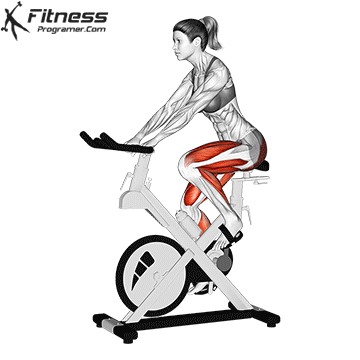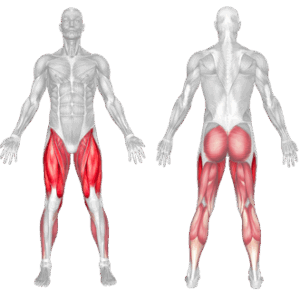Overview
The stationary bike is a versatile indoor cardio machine that offers a low-impact, heart-healthy workout suitable for all fitness levels. It helps improve cardiovascular endurance, burn calories, strengthen the legs, and support fat loss goals—all while minimizing stress on the joints. There are upright, recumbent, and spin-style bikes to suit various needs.
How to use a stationary bike

Adjust the seat height so your knee has a slight bend at the bottom of the pedal stroke.
Sit upright with a firm grip on the handlebars and feet securely in the pedals.
Start pedaling slowly to warm up your muscles and joints.
Increase resistance or speed as needed, depending on your workout type.
Maintain steady breathing and posture as you ride.
Cool down by lowering resistance and pedaling gently for 3–5 minutes.
Tips for Proper Form
Keep your back straight and core engaged throughout the ride.
Adjust the seat properly to avoid knee strain.
Push through the heels, not just the toes.
Avoid rocking your hips or leaning excessively on the handlebars.
Maintain consistent cadence and resistance.
Common Mistakes
Poor seat height, which can strain knees or hips.
Slouching or hunching over, reducing core and lung capacity.
Overusing the handlebars, reducing lower-body effort.
Pedaling too fast without resistance, minimizing benefits.
Skipping the warm-up or cooldown, increasing risk of cramps or injury.
Benefits of the Stationary Bike
Joint-Friendly Cardio: Low-impact pedaling motion reduces strain on the knees, hips, and ankles.
Effective Calorie Burn: Can burn hundreds of calories per session depending on effort and duration.
Strengthens Lower Body Muscles: Targets quads, hamstrings, glutes, and calves with each pedal stroke.
Supports Heart and Lung Health: Enhances aerobic capacity and circulation through consistent cardiovascular training.
Adaptable for All Levels: Easily adjustable resistance and pace make it beginner-friendly and athlete-approved.
Ideal for HIIT or Steady-State Workouts: Can be used for both fat-burning intervals and longer endurance sessions.
Safe Indoor Training Option: Allows for consistent training regardless of weather or outdoor safety concerns.
How to Incorporate Into Your Routine
- For Beginners: Ride for 10–15 minutes at low resistance to build stamina and form.
- For Fat Loss: Perform 30–45 minutes of moderate resistance cycling 3–5 times per week.
- For Endurance: Use longer rides (45–60 minutes) at steady pace or perform tempo rides.
- For Strength and Power: Use short bursts of high resistance for 20–30 seconds followed by recovery.
- For Circuit Training: Use the bike for 5–10 minute intervals between strength training sets.
- For General Fitness: Include in weekly rotation as a low-impact cardio day option.
- For Injury Rehab or Recovery: Use light pedaling to stimulate blood flow and improve joint mobility.
Muscles Worked

Frequently Asked Questions
Is cycling better than walking for cardio?
Both are excellent. Cycling offers greater leg strengthening, while walking is more weight-bearing.
Can the stationary bike help with fat loss?
Yes. When combined with a calorie deficit and consistent training, it supports body fat reduction.
How often should I use the bike?
3–5 times per week is ideal for cardiovascular and metabolic benefits.
Can I build leg muscles with the bike?
Yes, especially with higher resistance settings and hill-climb simulations.
Which is better: recumbent or upright bike?
Recumbent bikes offer more back support and comfort. Upright bikes provide a more athletic riding posture and core activation.
